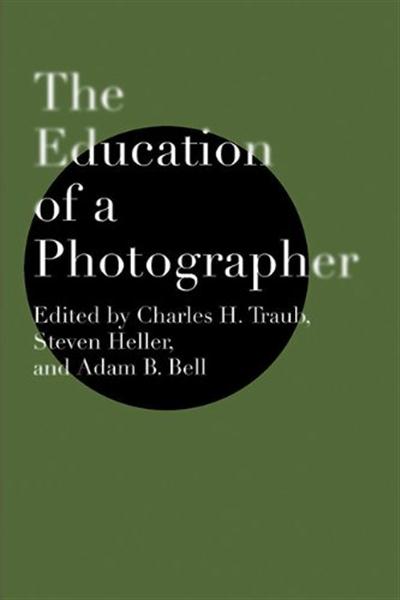 The Education of a Photographer compiled by Charles Traub, Steven Heller and Adam Bell is a collection of essays, articles, and interviews from the past and present of the photographic discipline. The point is inspiration, not education. In fact, there’s almost nothing in the book that really constitutes knowledge. It’s little more than a collection of perspectives and ideologies, which is not a bad thing.
The Education of a Photographer compiled by Charles Traub, Steven Heller and Adam Bell is a collection of essays, articles, and interviews from the past and present of the photographic discipline. The point is inspiration, not education. In fact, there’s almost nothing in the book that really constitutes knowledge. It’s little more than a collection of perspectives and ideologies, which is not a bad thing.
The book is broken up into four major sections, beginning with a look at the conversation around photography from the perspective of classic and more modern artists. About half of the selections from this section are taken from before the turn of the 21st century, with writings from figures like Alexander Rodchenko, Minor White, and Henri Cartier-Bresson, coiner of “the decisive moment”.
The next section deals with how photographers see themselves and each other and how the public at large sees them and what they create. Its in this section that we read accounts of the history of learning the photographic craft with personalities like Alexey Brodovitch and Aaron Siskind. This was a particularly interesting section as it dealt with how some of photography’s heavy-hitters related to their own education in the craft.
Next is a section dealing with how photographers interact with the professional world, and especially the gallery art world, and how that alters and affects meaning and the conversation. This section starts with the “legends” of the art photography world, and includes two experts from Alexey Brodovitch and Helen Gee, followed by a collection of interviews with contemporary professionals. This section should be encouraging for young photographers who are struggling with where their interest in photography places them in the whole context of the craft. Here’s a hint–even for the heroes of photography, the gallery wall is often the last way an image represents itself to the world.
The final section is a look at what formal education means to the photographer in the past, and today. This section is dotted with insight from the present day and the recent past. Art education to some, especially the artistically minded, seems like an oxymoron. So these chapters try to round out that perspective, although taken as a collection, the book doesn’t overstate the importance of traditional learning environments in art. Instead, the sections are made up mostly of educators sharing their perspective on why it’s worth it to them.
Each short chapter is consolidated from an existing and trusted source–it’s information and insight that might be hard to come by except for someone compiling it for review. Realistically, this book is only going to be useful if you’re already exploring the main points within photography. It could be considered the fringe interests of someone learning about photography. There are no images included to accompany what you’re reading, it’s all about thought.
This book could act as an excellent daily motivational tool for photographers. There are only a few chapters which take longer than about 10 minutes to read, although the entire book took me about 9 hours total.
In the end, this is an excellent collection of work and worth reading for someone being educated in photography. Photography has moved quickly as a technology and an art. The integrity of what we create requires that we’re not trying to constantly recreate the wheel.

Recent Discussion